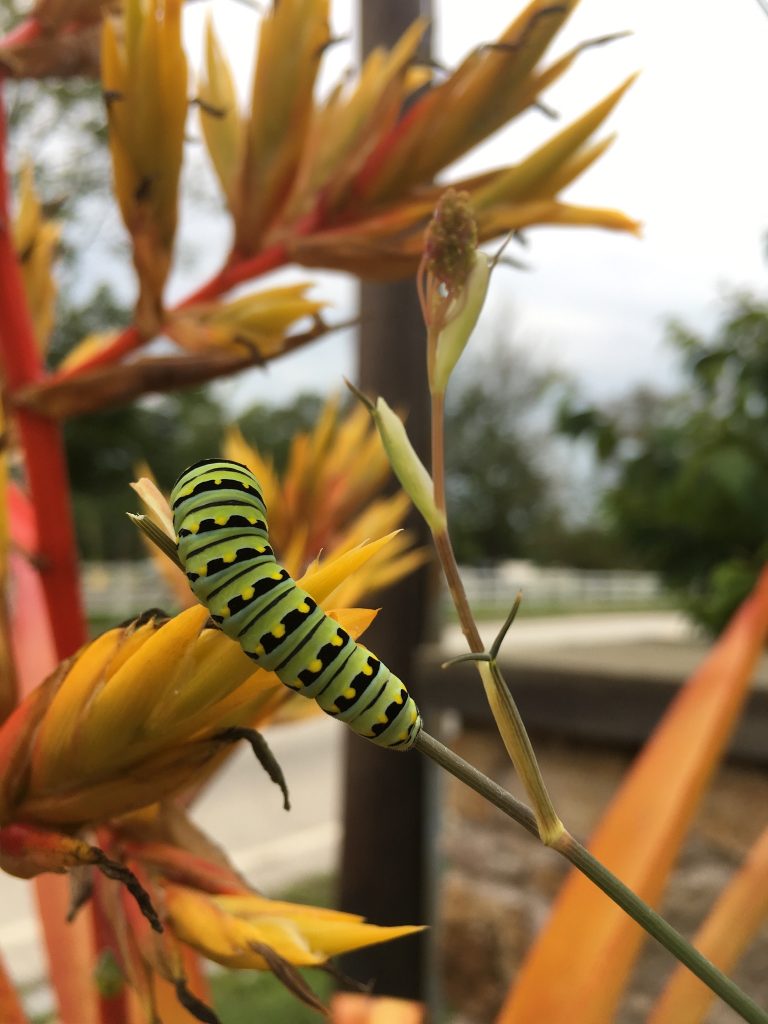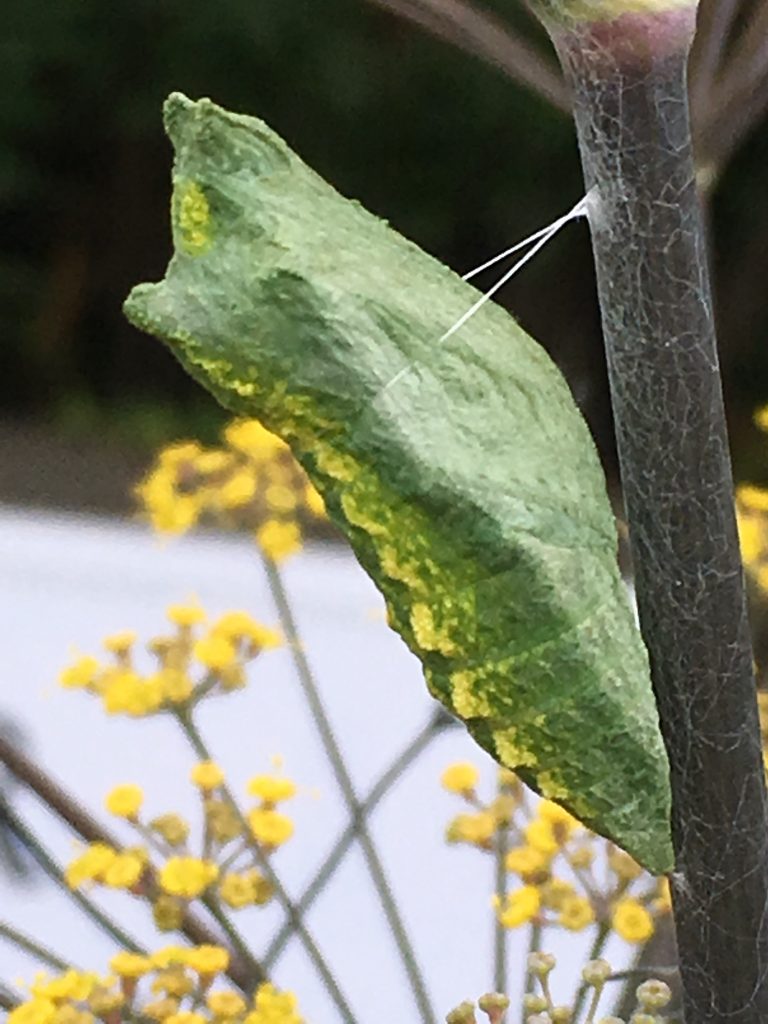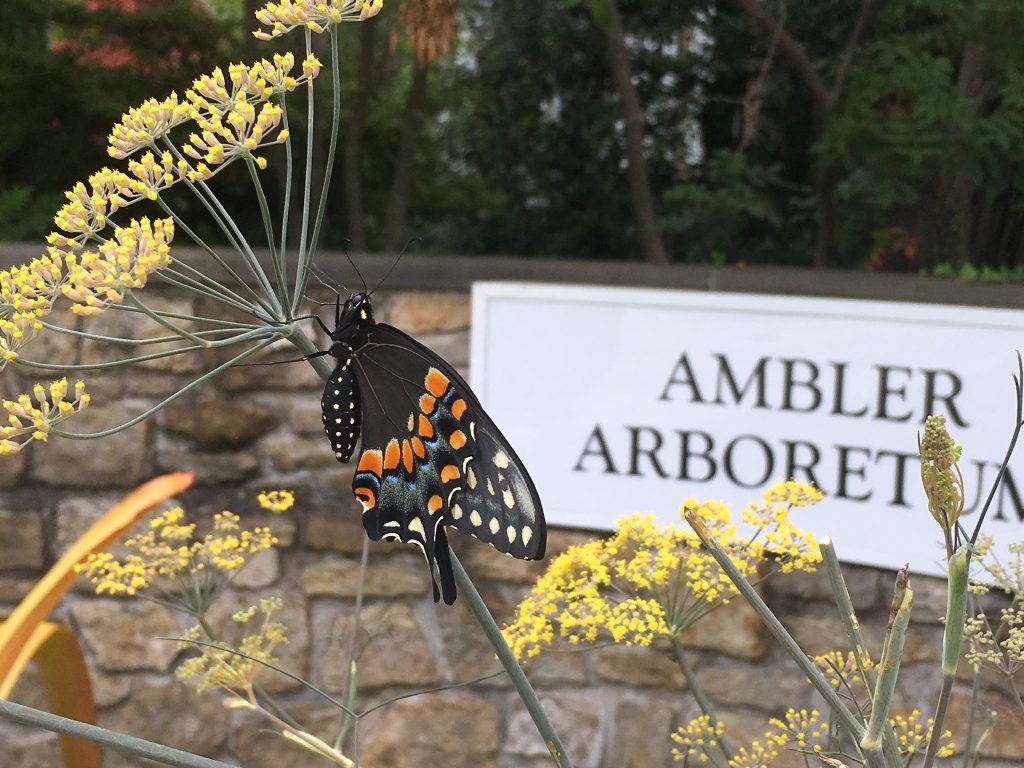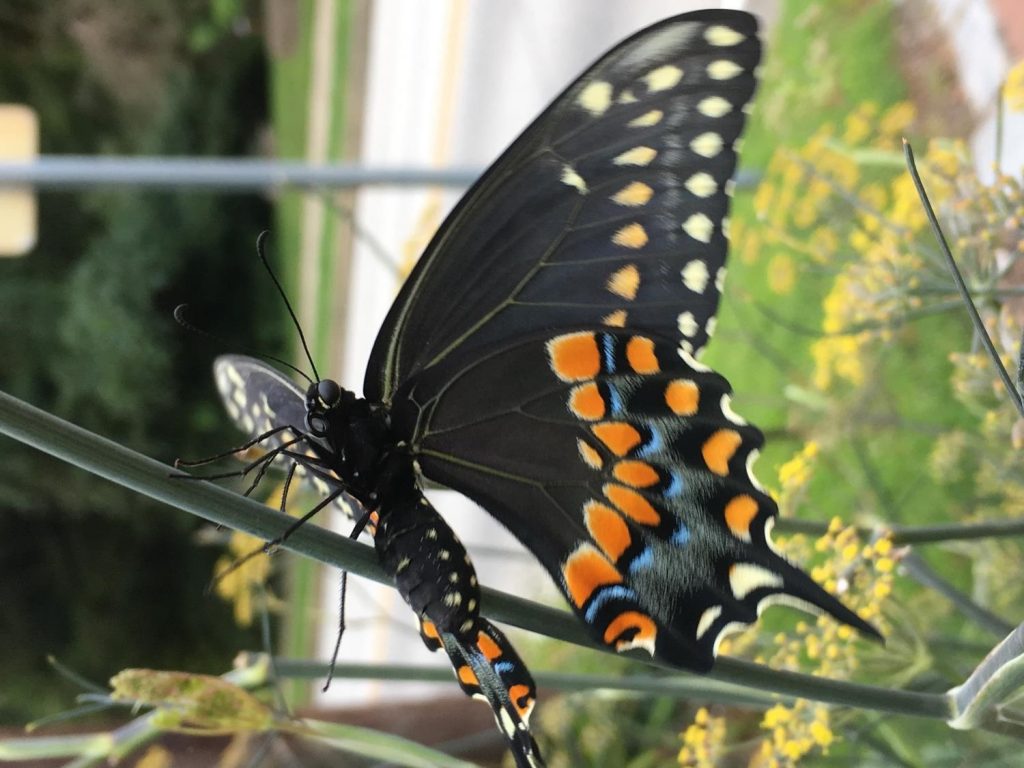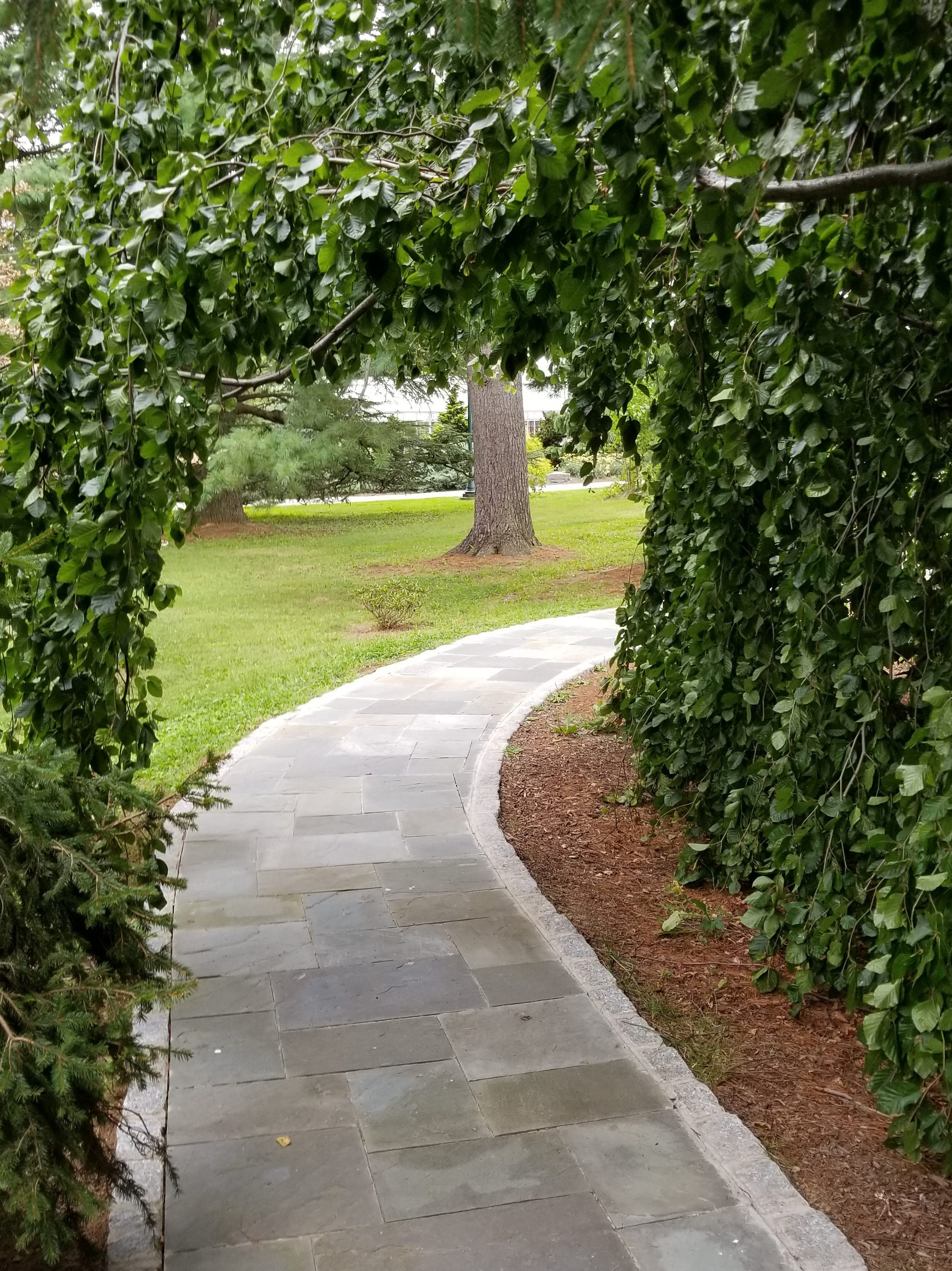- Eastern Black Swallowtail Caterpillar
- Eastern Black Swallowtail Chrysalis
- Newly Emerged Eastern Black Swallowtail Butterfly
- First Wing Spread of Eastern Black Swallowtail Butterfly
Seems to be a bumper crop of butterflies around this summer. Have you noticed this too?
Feels like everywhere I look I find Lepidoptera in various stages of development.
When I find one of these, or participate in our annual BioBlitz, or pause to consider the damage the deer, rabbit, groundhogs are causing to our plantings I find time to reflect on the fact that the Arboretum is a home.
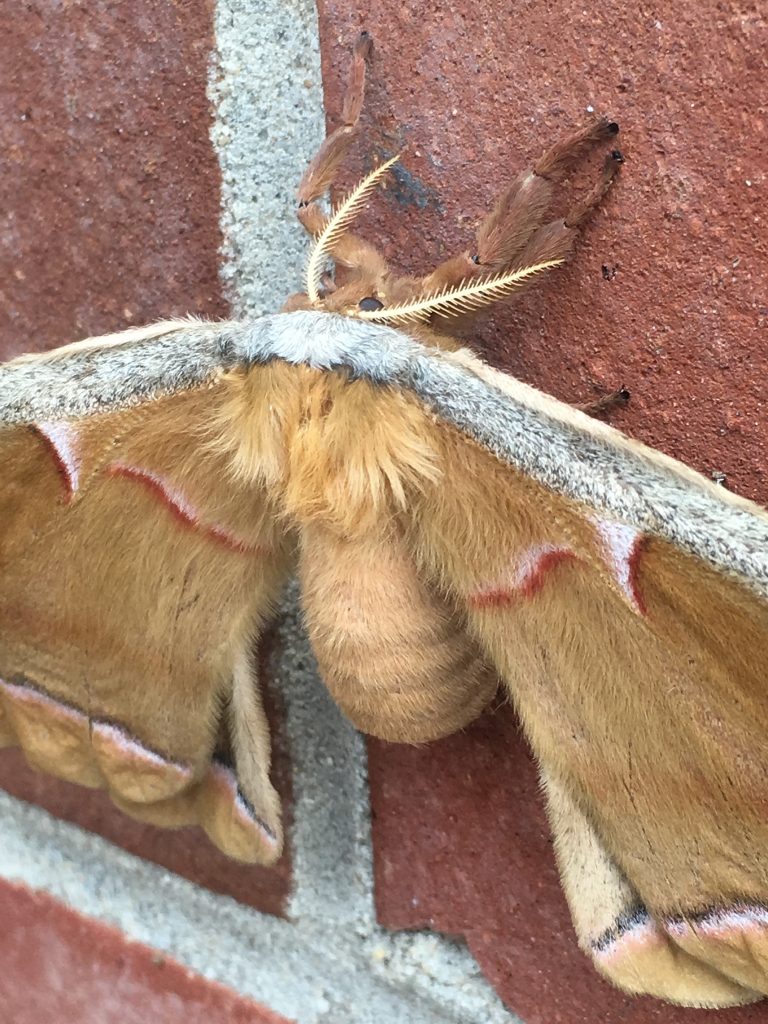
Polyphemous Moth
I know the Arboretum as an outdoor classroom for our students, as a living laboratory for our faculty, and as an inspriational and connective resource for our community and I know it is a home.
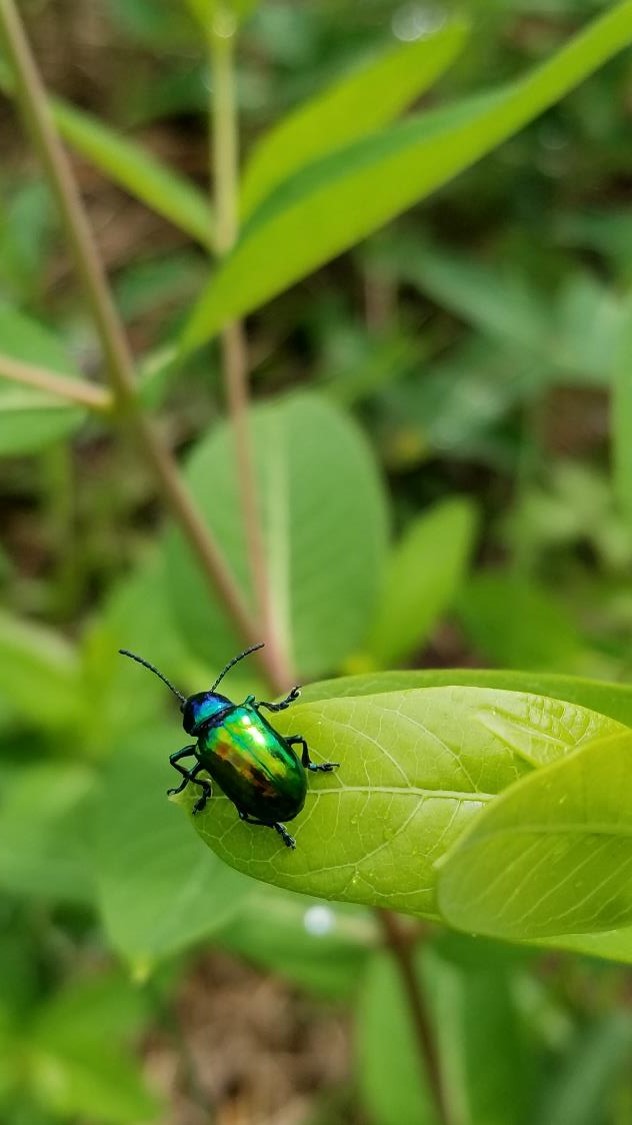
Dogbane Leaf Beetle on Dogbane
We embrace the violets some consider weeds to support Firillary butterflies. We embrace the chewed leaves of milkweeds to support the Monarchs. We welcome spiders and beetles as part of our integrated pest management program. We plant for the bees, and bats, and birds. We leave weeds because sometimes having them around is the only way to encourage something interesting to the gardens.
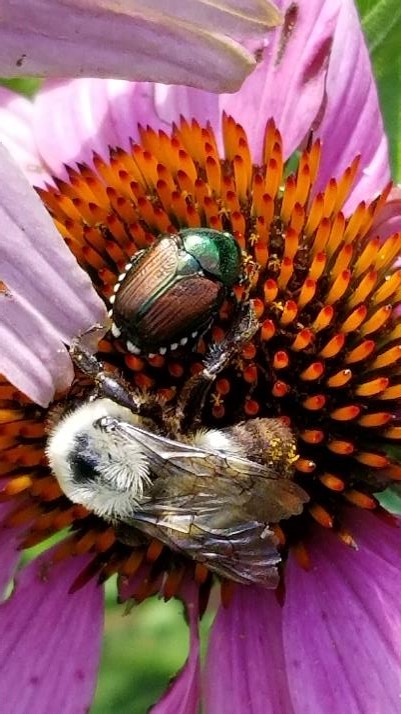
Japanese Beetle and Bumble Bee on Coneflower
The Arboretum as habitat is something I have been thinking a lot about. As we make management decisions, prioritize work and develop new exhibits and displays we have to work to balance the home we are provide with the lessons we want to teach and the research we want to conduct.
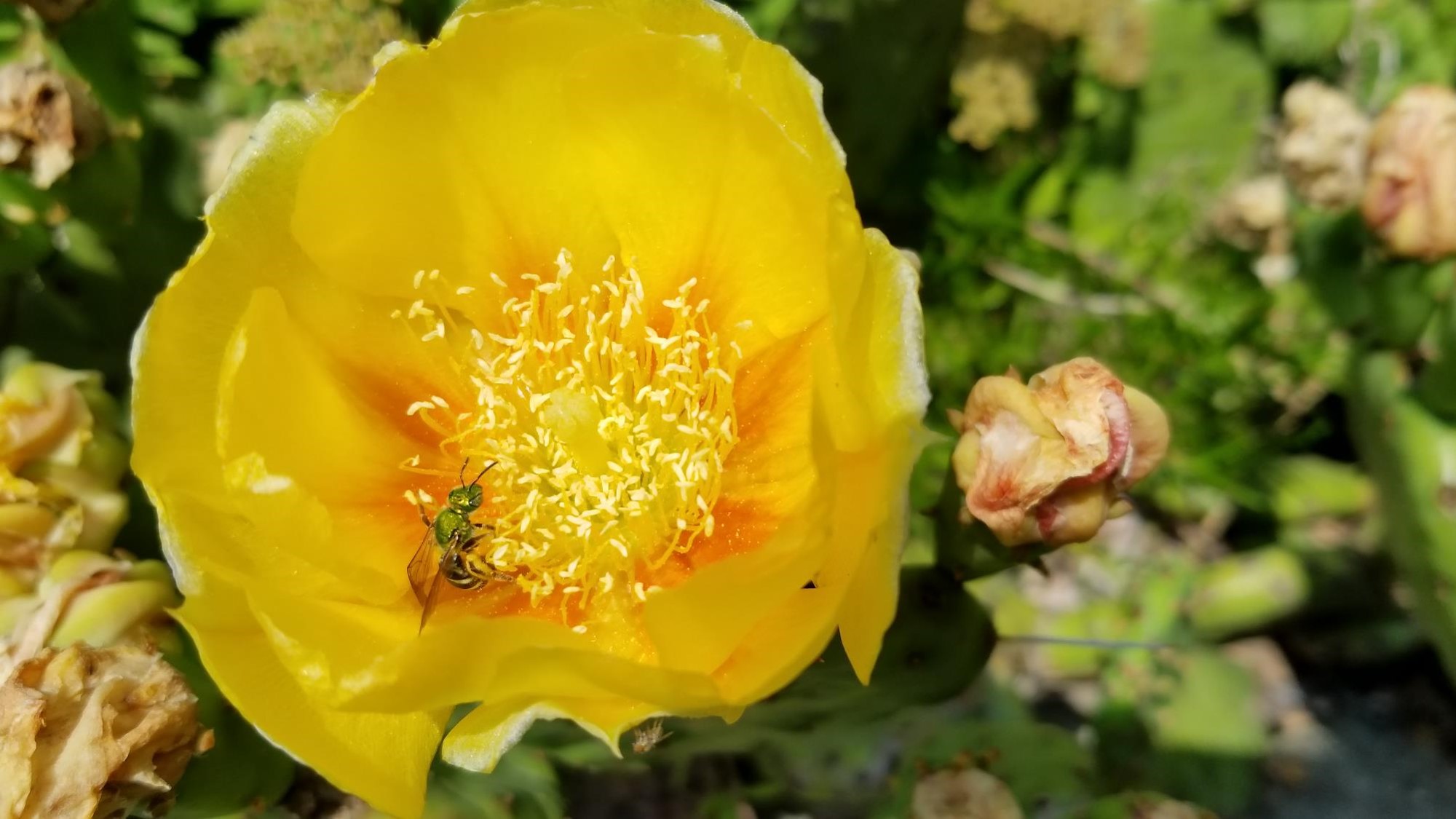
Sweat Bee on Cactus Flower
It is a balancing act, just like nature is a balancing act. What is a weed in one place is welcome in a nother. What is encouraged in one area is eliminated in another.
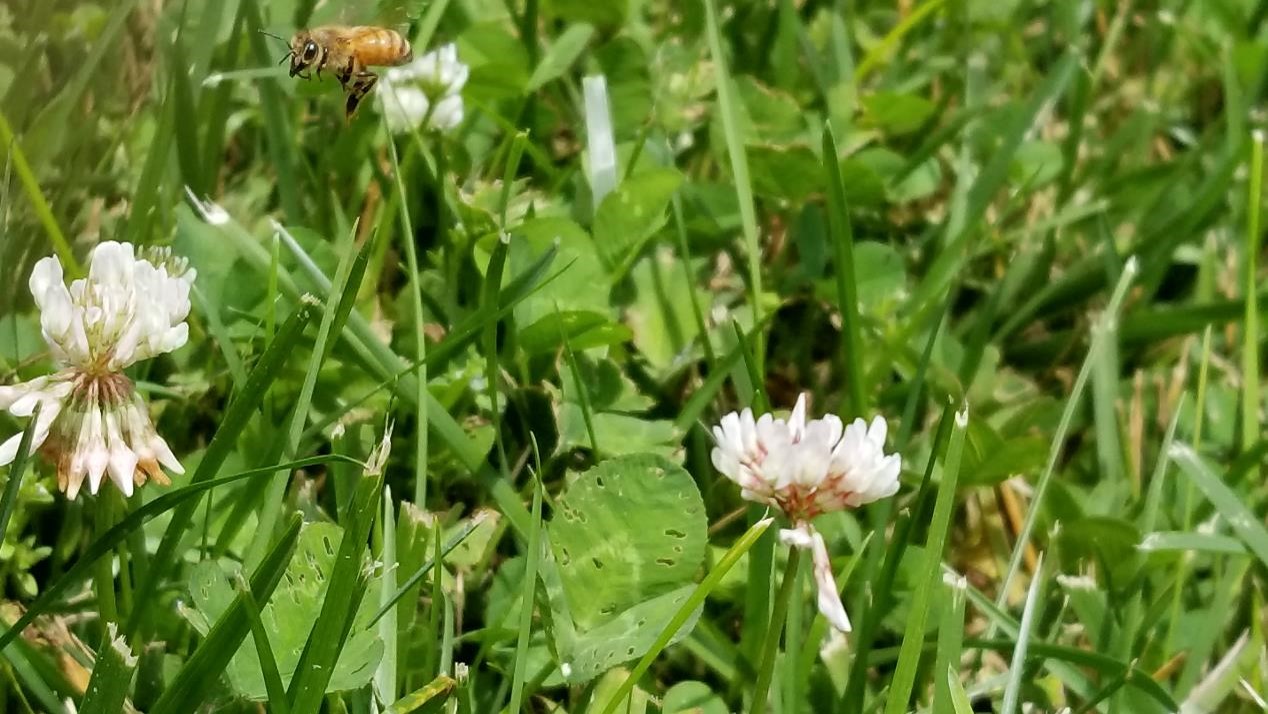
Honey Bee and White Clover
We have threats to our equilibreum like Spotted Lanternfly, Emerald Ash Borer, and Wooly Adelgid – all invasive pests who have found the Arboretum just the perfect habitat. We have challenges in a human-caused excess of deer in the gardens. But we also have splendid opportunities to teach about these pests, raise awareness, speak to beneficial insects and the power of plants and landscapes.
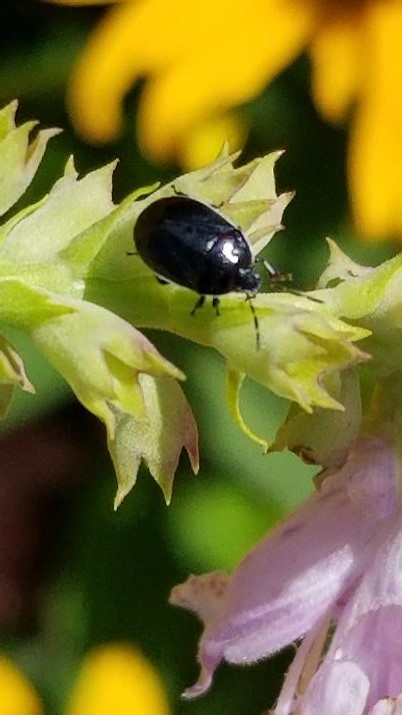
Flower Beetle on Obedient Plant
It is a privelege and a challenge to lead this Arboretum. Every day choices and decisions are made balancing the needs and wants of our various audiences and those that call the Arboretum home. Do we keep seedheads on the plants so students can learn about seedheads (and student workers can learn about weeding all of those iminent seedlings) or do we show proper horticulture technique and deadhead the plants, where can we strike balance?
How do we support those with a voice and the voiceless?
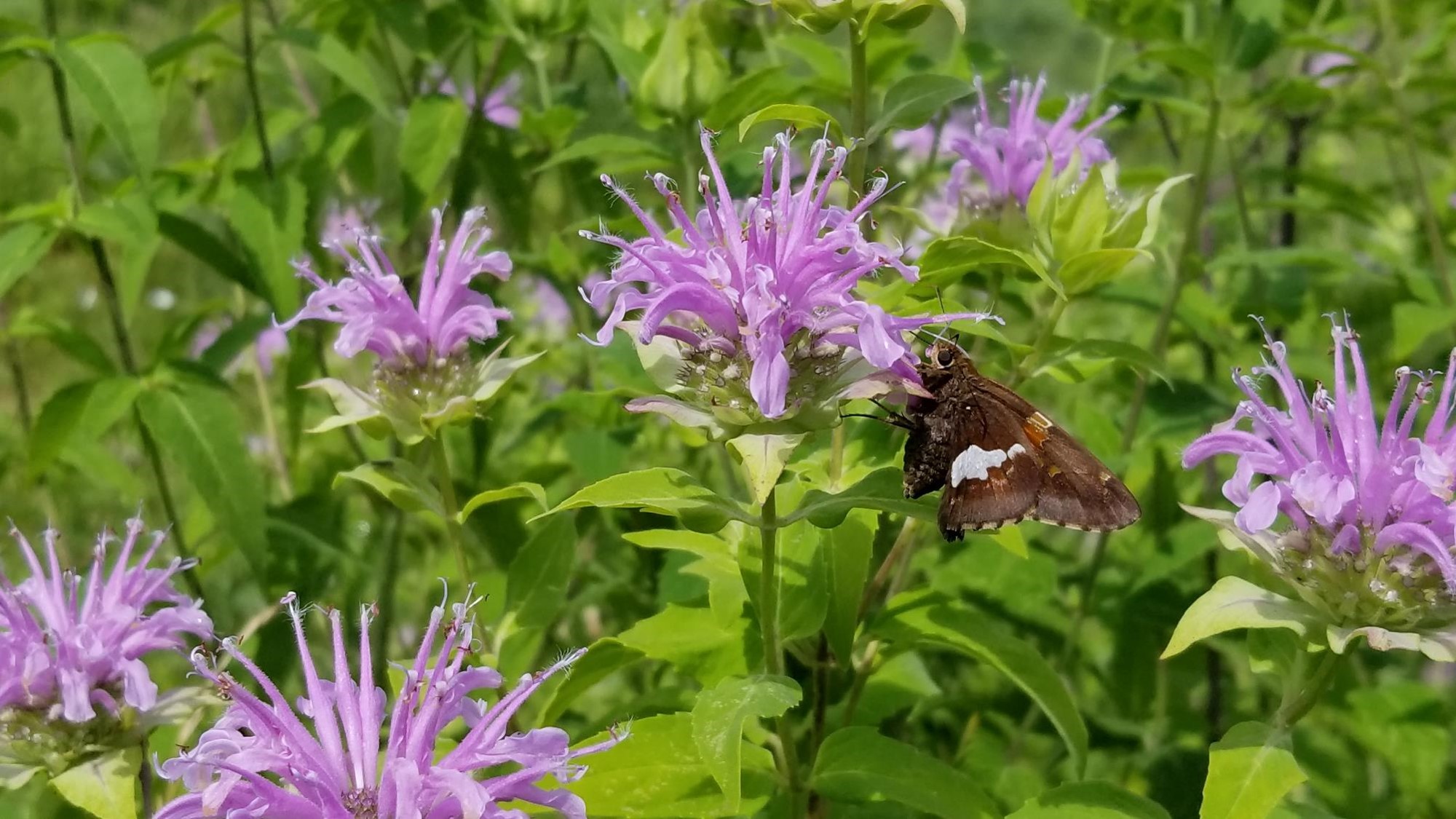
Skipper on Bee Balm

